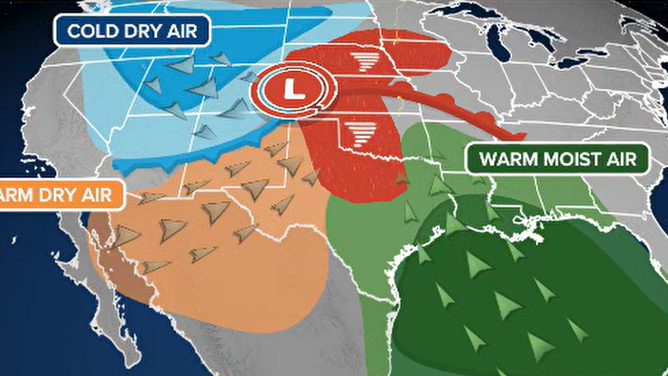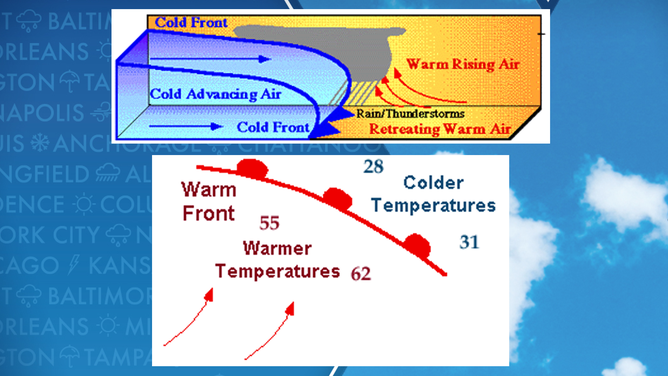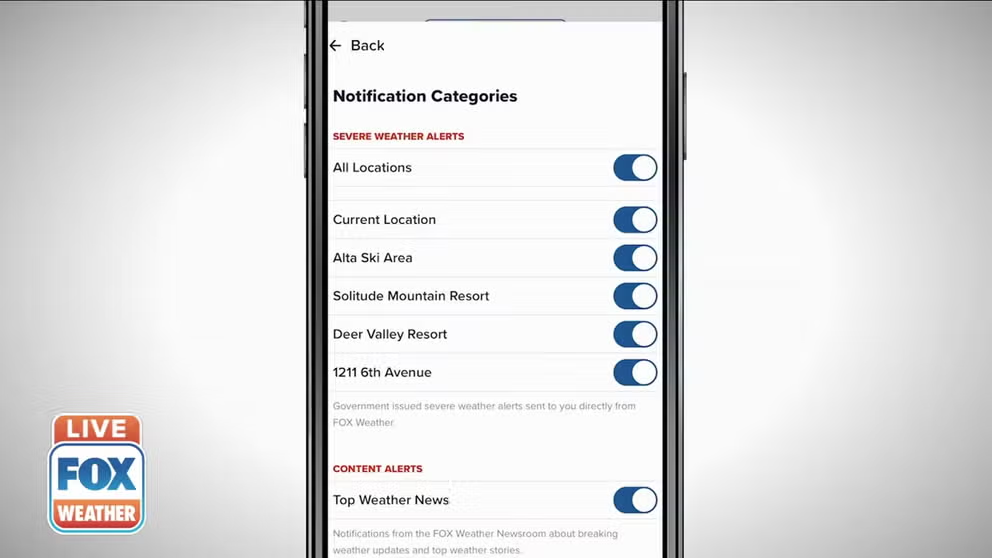What is a warm front?
There are four different types of fronts used in meteorology: cold fronts, warm fronts, stationary fronts and occluded fronts. Cold fronts are the fastest-moving type of fronts because warm air is typically slower to dislodge cold air masses.
How to set up notification alerts on your FOX Weather App
An instruction guide on how to set up notification alerts on your FOX Weather App so you and loved ones can stay safe during severe weather events
When a warm air mass pushes into colder air, you are likely witnessing what is known as a warm front in the world of meteorology.
Warm fronts often advance ahead of a storm system and can be the focal point for the development of showers and thunderstorms.
Ahead of the frontal boundary, clouds such as cirrus, cirrostratus and cirrocumulus are often prevalent, which turn into nimbostratus or cumulonimbus, if enough moisture is present.
Cold air is denser than warm air, so the warmer air mass rises since it is lighter, eventually leading to condensation.
During the winter months, the warm front is often the location where snow changes into sleet or freezing rain as temperatures rise to near or above freezing.
In severe weather season, warm fronts typically help prime the atmosphere for supercells that can produce hail, gusty winds and even tornadoes.

What is a warm front?
(FOX Weather)
What does a warm front look like?
A warm front is a red line that often extends from an area of low pressure. On the line, half-moon shapes indicate the direction of travel.
These shapes often point in an eastward or northerly direction in the Northern Hemisphere.
Warm fronts are typically shorter than other types of fronts, such as a cold front and a stationary front.
A stationary front takes on the appearance of both a cold front and a warm front because of its lack of movement, with cold air usually on one side and warm air on the other.

What does a warm front look like?
(NOAA)
What happens after a warm front passes?
There is not a set number of degrees a temperature must rise in order to constitute a warm front.
Usually, after a quick rise in the mercury as the front passes, temperatures will level off ahead of the next frontal boundary, which is usually a cold front.
One should expect to find more humid but sunnier weather once the warm front passes through.
